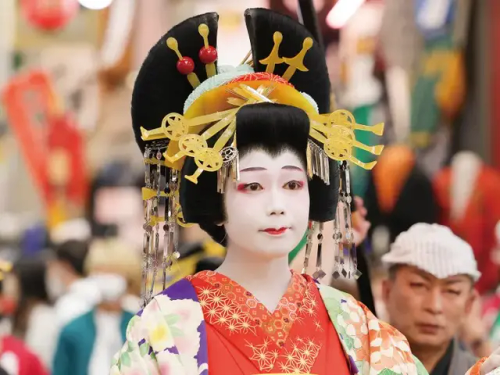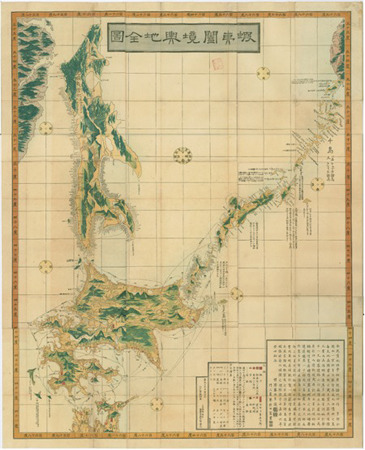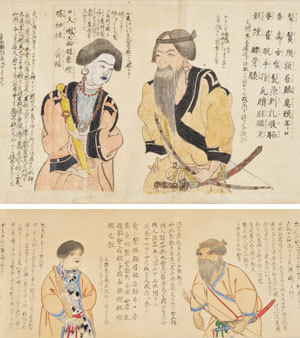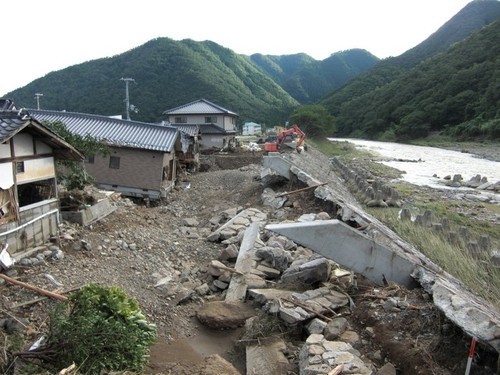Sean Bienvenidos Japonistasarqueologicos A Una Nueva Entrega En Esta Ocasión, Les Os Voy A Traer La


Sean bienvenidos japonistasarqueologicos a una nueva entrega en esta ocasión, les os voy a traer la definición de qué es arqueología, cuáles son sus aspectos a destacar sub-disciplinas. Una vez dicho esto, pónganse cómodos que empezamos.
-
Seguramente todos/as nos hemos preguntado alguna vez: ¿Qué es la arqueología? ¿Qué épocas abarca? ¿Qué países estudia? Seguramente cuando hablamos de arqueología a muchos se nos vienen imágenes como las de dinosaurios o las de Indiana Jones, son un clásico, pero eso es una visión errónea, ya que los arqueólogos no nos dedicamos a eso.
-
La arqueología como disciplina es interdisciplinar esto quiere decir, pues que toma prestado de otras disciplinas lo que necesita: como de la historia, biología, matemáticas, química y física y astronomía entre otras. Un arqueólogo tiene que tener unos conocimientos mínimos de todas las disciplinas existenciales, ya que en un yacimiento arqueológico nos podemos encontrar de todo, hay que saber identificar cada elemento que nos encontramos, pero en el yacimiento hay un equipo de especialistas en historia en biología y en otras disciplinas, que son los que se encargan de sus respectivos estudio, la arqueología es una disciplina de trabajo en grupo.
-
Espero que os haya gustado y nos vemos en próximas publicaciones.
-
この機会に、日本考古学へようこそ。考古学とは何か、その下位分野に焦点を当てた側面は何か、その定義を紹介します。そうは言っても、安心して始めましょう。
-
確かに、誰もが一度は「考古学とは何だろう?」と自問したことがあるでしょう。どの期間が対象ですか?どの国を勉強していますか?確かに考古学について話すとき、私たちの多くは恐竜やインディ・ジョーンズのような古典的なイメージを思い浮かべますが、考古学者はそれに専念しているわけではないので、それは誤った見方です。 - 学問としての考古学は学際的であり、歴史、生物学、数学、化学と物理学、天文学など、他の学問から必要なものを借用していることを意味します。 考古学者は、すべての実存的分野に関する最低限の知識を持っている必要があります。遺跡ではあらゆるものが見つかるため、見つかった各要素を特定する方法を知っている必要がありますが、現場には歴史、生物学の専門家のチームがいます。それぞれの研究を担当する他の分野では、考古学はグループワークの分野です。
-
気に入っていただければ幸いです。今後の投稿でお会いしましょう。
-
Welcome japonistasarqueologicos to a new installment. This time, I'm going to bring you the definition of what archaeology is, what are its sub-disciplines. Having said that, make yourselves comfortable, we're starting.
-
Surely we've all asked ourselves at some point: What is archaeology? What periods does it cover? What countries does it study? Surely when we talk about archaeology, many of us think of images like dinosaurs or Indiana Jones, they are a classic, but that is a wrong view, since archaeologists are not dedicated to that.
-
Archaeology as a discipline is interdisciplinary, which means that it borrows from other disciplines what it needs: such as history, biology, mathematics, chemistry, physics and astronomy, among others. An archaeologist must have a minimum knowledge of all the existential disciplines, since in an archaeological site we can find everything, we must know how to identify each element that we find, but in the site there is a team of specialists in history, biology and other disciplines, who are in charge of their respective studies, archaeology is a discipline of group work.
-
I hope you liked it and see you in future publications.
More Posts from Noticiasarquelogicasjaponesas and Others







Capítulo 1: Diferencias entre Geisha y una Oiran Introducción. Sean bienvenidos japonistasarqueologicos una nueva entrega resumen, en esta ocasión os contaré que es una Oiran (おいらん) dicho esto comencemos. - Las Oiran son prostitutas que surgieron en el siglo XVII en el período Edo. No debemos confundirlas con las Geishas(げいしゃ). - En la segunda imagen os enseño una Oiran (おいらん) del anime Kimetsu no Yaiba(los guardianes de la noche) - Espero que os haya gustado y nos vemos en próximas publicaciones de Historia, arqueología, geografía nipona, entre otros temas, Que pasen una feliz semana. - Chapter 1: Differences between Geisha and an Oiran Introduction. Japonistasarqueologicos are welcome to a new summary installment, this time I will tell you that it is an Oiran (おいらん) having said that, let's start. - The Oiran are prostitutes that emerged in the 17th century in the Edo period. We should not confuse them with Geishas(げいしゃ). - In the second image I show you an Oiran (おいらん) from the anime Kimetsu no Yaiba (the guardians of the night) - I hope you liked it and see you in future publications of History, archaeology, Japanese geography, among other topics, Have a happy week. - 第1章 芸者と花魁の違い紹介。 Japonistasarqueologicos は、新しい総集編へようこそ、今回はおいらん (おいらん) ということで、始めましょう。 - 花魁は、江戸時代の17世紀に登場した売春婦です。 芸者(げいしゃ)と混同してはいけません。 - 2 番目の画像では、アニメ鬼滅の刃 (夜の守護者) の花魁 (おいらん) を示しています。 - あなたがそれを気に入ってくれて、歴史、考古学、日本の地理、その他のトピックの今後の出版物でお会いできることを願っています。

Sean bienvenidos, japonistasarqueólogos, en esta ocasión os expongo una situación en lo que respecta al mundo occidental y oriental, dos caras de una misma moneda, ya sea historia del arte, arqueología, geografía, entre otros temas, vengo a exponer el gran desequilibrio que hay en lo que respecta a estas dos corrientes, dicho esto pónganse cómodos que comencemos. - En la foto de mi mano izquierda podemos ver claramente los países que engloban las corrientes de extremo oriente, que es el tema en particular de la publicación y al margen derecho podemos ver algunos países de occidente, entre otros. Voy a coger las palabras más sabias para explicar este desequilibrio de corrientes, que por desgracia, parece que los occidentalistas están implantando la idea del siglo XIX como que lo occidental es mejor que extremo oriente, ya que oriente al estar en la Cochinchina, pues se le tiene en un rango inferior y no es el caso. Si le preguntamos a la gente de la calle, el 90% de la gente si le preguntaras cosas de dicho tema, lo más probable es que no sepan nada, porque carecen de la ignorancia, pero que no es culpa de ellos, sino de cómo se han enseñado las cosas por parte de los gobiernos de los distintos países occidentales. - Otros puntos que vamos a resumir en este párrafo, serían la gente que lo difunde y fermenta la occidentalización, erradicando la orientalización de extremo oriente normal que la gente que divulgamos cosas, de extremo oriente, no tengamos el apoyo suficiente o solo de una parte. - Espero que os haya gustado, posdata estoy dando mi punto de vista, lo más probable es que haya gente que no lo comparta, otros si y otros se mantengan al margen nos vemos en próximas publicaciones. - ようこそ、日本の考古学者の皆さん、この機会に、私は美術史、考古学、地理など、同じコインの裏表である西洋と東洋の世界に関する状況を紹介します。これら 2 つの流れに関しては、そうは言っても、安心して始めましょう。 - 私の左手の写真には、この出版物の特別なテーマである極東海流を含む国々がはっきりと見え、右側にはいくつかの西洋諸国などが見えます。私はこの流れの不均衡を説明するために最も賢明な言葉を使うつもりだが、残念なことに、西洋主義者たちは、東洋はコーチシナにあるので西洋のほうが極東よりも優れているという19世紀の考えを植え付けているようだ。それは彼をより低いランクに置いているのですが、そうではありません。街行く人々に尋ねると、90%の人が、この話題について尋ねると、ほとんどの場合、彼らは無知なので何も知らないということですが、それは彼らのせいではなく、物事がどうなっているのかということです。さまざまな西側諸国の政府によって教えられてきました。 - この段落で要約するその他の点は、それを広め、西洋化を発酵させ、極東の東洋化を根絶する人々です。極東から物事を広める人々が十分な支持を得ていないのは正常ですまたは片側からのみ。 - 気に入っていただければ幸いです。追記 私は私の見解を述べていますが、おそらくそれを共有しない人もいれば、共有する人もいれば、近づかない人もいるでしょう。今後の出版物でお会いしましょう。 - Welcome, Japanese archaeologists, on this occasion I present to you a situation regarding the Western and Eastern world, two sides of the same coin, be it art history, archeology, geography, among other topics, I come to expose the great imbalance that There is in regards to these two currents, having said that, make yourself comfortable and let's begin. - In the photo on my left hand we can clearly see the countries that encompass the Far Eastern currents, which is the particular topic of the publication, and on the right side we can see some Western countries, among others. I am going to use the wisest words to explain this imbalance of currents, which unfortunately, seems that the Westernists are implanting the idea of the 19th century that the Western is better than the Far East, since the Orient is in Cochinchina, since it is It has him in a lower rank and that is not the case. If we ask people on the street, 90% of the people, if you asked them things about this topic, the most likely thing is that they do not know anything, because they lack ignorance, but that is not their fault, but how things have been taught by the governments of the different Western countries. - Other points that we are going to summarize in this paragraph would be the people who spread it and ferment Westernization, eradicating the orientalization of the Far East, it is normal that the people who spread things, from the Far East, do not have enough support or only from one side. - I hope you liked it, postscript I am giving my point of view, most likely there are people who do not share it, others do and others stay away, see you in future publications.

HISTORIA DE LA ARQUEOLOGÍA JAPONESA Y EL PENSAMIENTO CIENTÍFICO.
Capítulo 1: Sean bienvenidos, japonistasarqueológicos, a una nueva entrega de arqueología nipona, vista desde un punto de vista filosófico, una vez dicho esto pónganse cómodos qué empezamos. — Seguramente, todos nos hacemos las mismas preguntas cuando se nos pregunta determinados temas de historia y de arqueología. ¿Quiénes eran nuestros antepasados y por qué llegaron a este determinado lugar y no a x? ¿De qué medios disponían para lograr determinadas hazañas históricas? En nuestro caso nos centraremos en dos preguntas determinadas ¿Quiénes fueron los primeros pobladores del archipiélago japonés? Y de ver cómo dicha idea ha llegado a nuestros días sin una respuesta clara, ya que tanto arqueólogos, historiadores, antropólogos, entre otros, han intentado dar una posible respuesta a una de las mayores incógnitas de la historia de la arqueología japonesa. — ¿Cuándo surgió la arqueología japonesa propiamente dicha? La historia de Japón es un tanto complicada, debido a que la ciencia propiamente dicha no nace hasta finales del siglo XIX, para ser más exactos 12 de abril 1877 ¿Cuándo surgen las sociedades arqueológicas, antropológicas y el laboratorio de antropología en Tokio? Además, tuvieron mucha influencia de gente tanto de Europa como de Estados Unidos, ya que tenían una gran influencia para aquel momento y mencionaremos algunos y a uno de los arqueólogos más destacados del mundo japonés. — ¿Cuándo surgen las sociedades arqueológicas, antropológicas y el laboratorio de antropología en Tokio? Para responder a dicha pregunta: A partir de 1880,vino un proceso gradual de institucionalización a la arqueología, generando un nuevo marco académico y universitario: Dando lugar al nacimiento de la Sociedad Antropológica de Tōkyō 1884, se creó el Laboratorio de Antropología en la Universidad de Tōkyō 1888,la fundación de la Sociedad Arqueológica se fundó en Japón en 1895. — Espero que os haya gustado y nos vemos en próximas publicaciones que pasen una buena semana.
HISTORY OF JAPANESE ARCHEOLOGY AND SCIENTIFIC THOUGHT.
Chapter 1: Welcome, Japanesearchaeologicalists, to a new installment of Japanese archaeology, seen from a philosophical point of view. Having said that, get comfortable and let's begin. — Surely, we all ask ourselves the same questions when we are asked certain topics in history and archeology. Who were our ancestors and why did they arrive at this certain place and not x? What means did they have to achieve certain historical feats? In our case we will focus on two specific questions: Who were the first settlers of the Japanese archipelago? And to see how this idea has reached our days without a clear answer, since archaeologists, historians, anthropologists, among others, have tried to give a possible answer to one of the biggest unknowns in the history of Japanese archaeology. — When did Japanese archeology itself emerge? The history of Japan is somewhat complicated, because science itself was not born until the end of the 19th century, to be more exact April 12, 1877 When did the archaeological and anthropological societies and the anthropology laboratory emerge in Tokyo? In addition, they had a lot of influence from people from both Europe and the United States, since they had a great influence at that time and we will mention some of them and one of the most prominent archaeologists in the Japanese world. — When did the archaeological and anthropological societies and the anthropology laboratory emerge in Tokyo? To answer this question: Starting in 1880, a gradual process of institutionalization of archeology came, generating a new academic and university framework: Giving rise to the birth of the Tōkyō Anthropological Society 1884, the Anthropology Laboratory was created at the University from Tōkyō 1888, the foundation of the Archaeological Society was founded in Japan in 1895. — I hope you liked it and see you in future posts, have a good week.
日本の考古学と科学思想の歴史。
第1章: 日本の考古学者の皆さん、哲学的観点から見た新しい日本考古学へようこそ。 — 確かに、歴史や考古学の特定のトピックを尋ねられたとき、私たちは皆同じ質問をするでしょう。 私たちの祖先は誰でしたか、そしてなぜ彼らは x ではなくこの特定の場所に到着したのでしょうか? 彼らは特定の歴史的偉業を達成するためにどのような手段を必要としたのでしょうか? 私たちの場合は、2 つの具体的な質問に焦点を当てます。日本列島の最初の入植者は誰ですか? そして、考古学者、歴史家、人類学者などが、日本の考古学史上最大の未知の一つに可能な答えを与えようとして以来、この考えが明確な答えがないまま、どのようにして現代に至ったのかを見てみましょう。 — 日本の考古学自体はいつ頃から生まれたのでしょうか? 日本の歴史はやや複雑です。科学そのものが誕生したのは 19 世紀末、より正確には 1877 年 4 月 12 日です。考古学人類学協会と人類学研究所が東京に誕生したのはいつですか? さらに、彼らは当時大きな影響力を持っていたため、ヨーロッパとアメリカの両方の人々から多くの影響を受けていました。彼らの一部と日本の世界で最も著名な考古学者の一人についても言及します。 — 東京に考古人類学会や人類学研究室が誕生したのはいつですか? この質問に答えるには、1880 年から考古学の制度化が段階的に進み、新しい学問と大学の枠組みが生まれました。1884 年に東京人類学会が誕生し、1888 年に東京で人類学研究室が大学に設立されました。考古学協会の財団は 1895 年に日本で設立されました。 — 気に入っていただければ幸いです。今後の投稿でお会いしましょう。良い一週間をお過ごしください

Sean bienvenidosfanaticosarqueológicos a una nueva noticia arqueológica del país del sol naciente ¿Dé que trata dicha noticia? Pues a continuación sin más demora os traigo un supernotición del periodo Asuka(592-710).
-
Se han descubierto unos restos arqueológicos que datan del año 650 hace unos 1300 años de antigüedad en la antigua ciudad de Asuka en la prefectura de Nara, para la próxima publicación hablaremos de las prefecturas, aunque sea un resumen.
-
¿Quién ha encontrado estos restos arqueológicos? Fueron encontrados por el Instituto Arqueológico de Kashihara del que ya hablaremos próximamente. ¿Cuál era el uso de este canal? Serviría para desviar el agua que se desbordaba para llenar el estanque que os dejaré una ilustración del mismo.
-
Las piedras tienen un diámetro de 6 metros, las cuales están pavimentadas. Desde luego una gran obra hidráulica para su época. - Os deseo un feliz día y nos vemos en próximas publicaciones un cordial saludo.
-
考古学ファンの皆様、日出ずる国からの新しい考古学ニュースへようこそ。このニュースは何についてのものですか? さて、早速、飛鳥時代(592年~710年)のスーパーニュースをお届けします。
-
古都奈良県の飛鳥市で約1300年前の650年頃の遺跡が発見されたが、次回はまとめではあるが都道府県の話をしたいと思う。 - 誰がこれらの遺跡を発見したのでしょうか? それらは橿原考古学研究所によって発見されました。これについては後ほど説明します。 このチャンネルの用途は何ですか? これは、溢れ出た水を池に流すのに役立ちます。その図を残しておきます。
-
直径6メートルの石が敷き詰められている。 確かに当時としては素晴らしい水圧作業でした。
-
幸せな一日をお祈りいたします。また今後の出版物でお会いしましょう。心からご挨拶申し上げます。
-


Welcome archaeological fans to a new archaeological news from the country of the rising sun. What is this news about? Well, without further delay, I bring you a super news from the Asuka period (592-710).
-
Archaeological remains dating back to the year 650, about 1,300 years ago, have been discovered in the ancient city of Asuka in Nara Prefecture. For the next publication we will talk about the prefectures, even if it is a summary.
-
Who found these archaeological remains? They were found by the Kashihara Archaeological Institute, which we will talk about soon. What was the use of this channel? It would serve to divert the water that was overflowing to fill the pond, which I will leave you with an illustration of.The stones have a diameter of 6 meters, which are paved. Certainly a great hydraulic work for its time.
-
I wish you a happy day and see you in future publications, cordial greetings.





Capítulo 1: Introducción a los Emishi. Sean bienvenidos amantes del mundo japonés a una nueva publicación, en esta ocasión vamos a hablar sobre los emishi dicho esto pónganse cómodos que empezamos. - Para empezar, el término emishi hace referencia a todas las tribus y pueblos que vivían y que todavía viven al norte de Japón es decir la mitad norte de Tohoku, incluida hokkaido a este pueblo se le denominaba y se le denomina todavía a día de hoy Ainu, considerados los primeros pobladores del archipiélago a lo largo del siglo XVI hubo una serie de campañas militares para controlar dicho territorio aunque ya en el siglo VII siglo VIII después de Cristo durante el apogeo del clan yamato crearon una serie de fortalezas al norte para mantenerlos a raya. De hecho eran denominados bárbaros del norte que además se revelarán en más de una ocasión bajo el dominio japonés sin resultado alguno, actualmente se les da un reconocimiento a esta cultura, que en el pasado no lo tuvieron, como por ejemplo hay un museo dedicado a ellos y a su cultura. - Espero que os haya gustado y nos vemos en próximas publicaciones que pasen una buena semana. - 第 1 章: 蝦夷の紹介。 日本世界を愛する皆さん、新しい出版物にようこそ。今回は蝦夷について話します。とはいえ、気を楽にして始めましょう。 - まず、蝦夷という用語は、日本の北、つまり北海道を含む東北の北半分に住んでいた、そして今も住んでいるすべての部族と民族を指し、この民族は現在もアイヌと呼ばれていると考えられています。 16 世紀を通じてこの列島に最初に定住した人々は、その領土を支配するために一連の軍事作戦を行ったが、すでに 7 世紀から 8 世紀にはヤマト氏の全盛期に、彼らは北に一連の要塞を築き、領土を維持していた。湾。実際、彼らは北の野蛮人と呼ばれていましたが、日本の統治下でも何の成果も得られずに何度も姿を現しましたが、現在では、この文化は、例えば、そこでは過去にはなかった認識を与えられています。は彼らとその文化に特化した博物館です。 - 気に入っていただければ幸いです。今後の投稿でお会いしましょう。良い一週間をお過ごしください。 - Chapter 1: Introduction to the Emishi. Welcome lovers of the Japanese world to a new publication, this time we are going to talk about the emishi, that being said, make yourself comfortable and let's get started. - To begin with, the term Emishi refers to all the tribes and peoples who lived and still live in the north of Japan, that is, the northern half of Tohoku, including Hokkaido. This people was called and is still called Ainu today. , considered the first settlers of the archipelago throughout the 16th century there were a series of military campaigns to control said territory although already in the 7th century 8th century AD during the heyday of the Yamato clan they created a series of fortresses to the north to keep them at bay. stripe. In fact, they were called barbarians of the north who also revealed themselves on more than one occasion under Japanese rule without any result. Currently, this culture is given recognition, which in the past they did not have, such as, for example, there is a museum dedicated to them and their culture. - I hope you liked it and see you in future posts, have a good week.




Sean bienvenidos japonistasarqueológicos a una nueva entrega para esta cuenta, en esta ocasión os voy a contar la historia del Guion Matsuri (祇園祭) aparece por primera vez primera en el siglo IX( 865) durante el periodo Heian. - ¿Qué significa esta festividad? Representa cuando se sofocó la epidemia que tuvo lugar en Kioto durante el período Heian se fabricaron 66 alabardas en el Jardín Shinsen-en y se rezó por la extinción de la epidemia. - El Gion Matsuri se celebra cada mes de julio y es una festividad muy característica del verano que van desde: 1 al 31 de julio. - Espero que os haya gustado y nos vemos en próximas publicaciones de arqueología e historia Japonesa un cordial saludo. - 考古学ジャポニストは、このアカウントの新作を歓迎します。今回は、平安時代の9世紀(865)に最初に登場した祇園祭の物語をお伝えします。 - この休日はどういう意味ですか? 平安時代に京都で起こった流行が鎮圧され、神泉苑で66の鉾が作られ、流行の絶滅を祈願したことを表しています。 - 祇園祭は毎年7月に祝われ、7月1日から31日まで続く夏の非常に特徴的なお祭りです。 - あなたがそれを気に入ってくれて、日本の考古学と歴史の将来の出版物であなたに会えることを願っています、心からの挨拶。 - Archaeological Japonists are welcome to a new installment for this account, this time I am going to tell you the story of the Matsuri Script (祇園祭) first appears in the 9th century (865) during the Heian period. - What does this holiday mean? It represents when the epidemic that took place in Kyoto during the Heian period was quelled, 66 halberds were made in the Shinsen-en Garden and prayers were made for the extinction of the epidemic. - The Gion Matsuri is celebrated every July and is a very characteristic festivity of the summer that goes from: July 1 to 31. - I hope you liked it and see you in future publications of Japanese archeology and history, a cordial greeting.




Sean bienvenidos japonistasarqueológicos, a una nueva entrega en la cual hablaremos de la famosa estación de Tokyo, uno de los pocos edificios que ha sobrevivido al paso del tiempo, ya que tras la operación doolittle y el gran terremoto de Tokio de 1923, Tokio ha sido muy remodelada, dicho esto pónganse cómodos que empezamos. - En 1908, comenzó su construcción en lo que respecta a la estación central, en 1914 empezó a funcionar, en la era Taisho 1915 Se inauguró el hotel de la estación de Tokio. En el año 1923 tiene lugar el Gran Terremoto de Kanto y el edificio de la estación no está particularmente dañado, se pudo reparar, pero la ciudad de Tokyo fue remodelada por completo y en 2007 realizaron trabajos de restauración, terminado en 2012. Hay que recordar que ha sufrido muchas restauraciones, ya que la de 1945 fue la más letal de todas. - Espero que os haya gustado y nos vemos en próximas publicaciones ¿Conocían este edificio y su historia? Que pasen una buena semana. - 今回は、有名な東京駅についてお話します。ドゥーリトル作戦や1923年の東京大震災の後、東京は大きく改造されましたが、その中でも数少ない時代の流れに耐えた建物の一つです。 - 1908年、中央駅の建設が始まり、1914年に開業、大正時代の1915年には東京ステーションホテルがオープンしました。1923年に関東大震災が起こり、駅舎は特に被害はなく、修復されましたが、東京の街は完全に改造され、2007年に修復工事が行われ、2012年に完成しました。1945年の震災が最も致命的であったため、何度も修復が行われたことを忘れてはならない。 - この建物とその歴史を知っていましたか?それでは、今週もよろしくお願いします。 - Welcome to a new installment in which we will talk about the famous Tokyo Station, one of the few buildings that has survived the passage of time, since after operation doolittle and the great Tokyo earthquake of 1923, Tokyo has been greatly remodelled, that said, make yourselves comfortable and let's get started. - In 1908, construction began on the Central Station, which became operational in 1914, and in the Taisho era 1915, the Tokyo Station Hotel was opened. In 1923 the Great Kanto Earthquake took place and the station building was not particularly damaged, it was repaired, but the city of Tokyo was completely remodelled and in 2007 restoration work was carried out, completed in 2012. It should be remembered that it has undergone many restorations, as the one in 1945 was the most lethal of them all. - I hope you liked it and see you in future posts. Did you know this building and its history? Have a nice week.





Sean bienvenidos, japonistasarqueológicos a una nueva entrega, en esta ocasión hablaré sobre actualidad nipona, una vez dicho esto pónganse cómodos que empezamos. — El domingo 16 de julio, azotaron fuertes lluvias al archipiélago nipón y hace no mucho el tifón Lan paralizó el tráfico aéreo de Japón y dejó miles de evacuados al oeste, además sin electricidad. Pero en este caso se han anegado muchas zonas del norte, causando efectos geográficos catastróficos y causando evacuaciones, etc. Por ejemplo: La ciudad de Akita registró precipitaciones, fue un récord, más de 250 milímetros durante un período de 48 horas, todo un hito histórico. — Espero que os guste y nos vemos en próximas publicaciones, que pasen una buena semana. - Welcome, Japanese archaeologists, to a new installment, this time I will be talking about Japanese current affairs, and once that is said, make yourselves comfortable and let's get started. - On Sunday 16th July, heavy rains hit the Japanese archipelago and not long ago Typhoon Lan paralysed Japan's air traffic and left thousands of evacuees in the west without electricity. But in this case many areas in the north have been flooded, causing catastrophic geographical effects and causing evacuations, etc. For example: The city of Akita recorded record rainfall of more than 250 millimetres over a 48-hour period, a historic milestone. - I hope you like it and see you in future posts, have a good week. - 日本の考古学者たちよ、新しい回へようこそ。今回は日本の時事問題についてお話しします。そう言ったら、くつろいで、始めましょう。 - 7月16日の日曜日、日本列島は大雨に見舞われ、少し前には台風12号が日本の空の便を麻痺させ、西日本では何千人もの避難者が停電に見舞われた。しかし今回は、北部の多くの地域が浸水し、地理的に壊滅的な影響を引き起こし、避難などを余儀なくされている。例えば:秋田市では、48時間に250ミリ以上の記録的な雨量を記録し、歴史的な出来事となった。 - お気に召していただけたなら幸いである.





Sean bienvenidos, japonistasarqueológicos a una nueva entrega, de arqueología en la que comentaremos, como las Herramientas de hace 2000 años, nos revelan la vida en el período Yayoi, una vez dicho esto pónganse cómodos que empezamos. — Las herramientas posiblemente tuvieran la influencia de china, al igual que otras muchas cosas del país del sol naciente, os pondré imágenes del museo en para que podáis ver el itinerario no sólo de las herramientas sino lo que podéis encontrar en sus adentros, hay que recordar que muchos de esos objetos fueron desenterrados por las personas ya mencionadas anteriormente. — Espero que os guste y nos vemos en próximas publicaciones, que pasen una buena semana. - 日本の考古学者諸君、ようこそ考古学の新連載へ。2000年前の道具が弥生時代の生活をどのように明らかにしたかを議論する。 - 道具はおそらく中国の影響を受けたもので、その他にも日出ずる国の様々なものがあります。博物館の写真をお見せしますから、道具の行程だけでなく、その中から何が見つかるかも見てください。これらの物の多くは、上記の人々によって発掘されたことを覚えておいてください。 - それでは、また次の記事でお会いしましょう。 - Welcome, Japanese archaeologists, to a new installment of archaeology in which we will discuss how tools from 2000 years ago reveal life in the Yayoi period, so make yourselves comfortable and let's get started. - The tools were possibly influenced by China, as well as many other things from the land of the rising sun, I will show you pictures from the museum so you can see the itinerary not only of the tools but also what you can find inside them, remember that many of these objects were unearthed by the people mentioned above. - I hope you like it and see you in future posts, have a nice week.
-
More information: https://www.shizuoka-toromuseum.jp/zhcn/
-
 uncertainty-darkness liked this · 4 months ago
uncertainty-darkness liked this · 4 months ago -
 autonomy1 liked this · 4 months ago
autonomy1 liked this · 4 months ago -
 vuonkhuya liked this · 4 months ago
vuonkhuya liked this · 4 months ago -
 lcc-ldv liked this · 4 months ago
lcc-ldv liked this · 4 months ago -
 chuprinin liked this · 5 months ago
chuprinin liked this · 5 months ago -
 noticiasarquelogicasjaponesas reblogged this · 5 months ago
noticiasarquelogicasjaponesas reblogged this · 5 months ago -
 vivencias-del-alma reblogged this · 5 months ago
vivencias-del-alma reblogged this · 5 months ago -
 scentedlovebeliever liked this · 5 months ago
scentedlovebeliever liked this · 5 months ago -
 momoyama7788 liked this · 6 months ago
momoyama7788 liked this · 6 months ago -
 waiting-eyez liked this · 6 months ago
waiting-eyez liked this · 6 months ago -
 noticiasarquelogicasjaponesas reblogged this · 6 months ago
noticiasarquelogicasjaponesas reblogged this · 6 months ago -
 rennane-renna liked this · 6 months ago
rennane-renna liked this · 6 months ago -
 muzetrigger liked this · 6 months ago
muzetrigger liked this · 6 months ago -
 34istanbyl liked this · 7 months ago
34istanbyl liked this · 7 months ago -
 rorydbe liked this · 7 months ago
rorydbe liked this · 7 months ago -
 ninomeira liked this · 7 months ago
ninomeira liked this · 7 months ago -
 christabelq liked this · 7 months ago
christabelq liked this · 7 months ago -
 rodolfo9999 liked this · 7 months ago
rodolfo9999 liked this · 7 months ago -
 burubonk liked this · 7 months ago
burubonk liked this · 7 months ago -
 buffetlicious liked this · 7 months ago
buffetlicious liked this · 7 months ago -
 matthew29992291799999920 liked this · 7 months ago
matthew29992291799999920 liked this · 7 months ago -
 bear-pattern-hamster liked this · 7 months ago
bear-pattern-hamster liked this · 7 months ago -
 futurequeensmusic liked this · 7 months ago
futurequeensmusic liked this · 7 months ago -
 enablesomething liked this · 7 months ago
enablesomething liked this · 7 months ago -
 margocooper liked this · 7 months ago
margocooper liked this · 7 months ago -
 alex--max liked this · 7 months ago
alex--max liked this · 7 months ago -
 hiromusicarts-blog liked this · 7 months ago
hiromusicarts-blog liked this · 7 months ago -
 hcr-den liked this · 7 months ago
hcr-den liked this · 7 months ago -
 takanaminato liked this · 7 months ago
takanaminato liked this · 7 months ago -
 adam-trademark liked this · 7 months ago
adam-trademark liked this · 7 months ago -
 i-don-world liked this · 7 months ago
i-don-world liked this · 7 months ago -
 narihira8 liked this · 7 months ago
narihira8 liked this · 7 months ago -
 hide-koba liked this · 7 months ago
hide-koba liked this · 7 months ago -
 jlmahmud liked this · 7 months ago
jlmahmud liked this · 7 months ago -
 helluvatimes liked this · 7 months ago
helluvatimes liked this · 7 months ago -
 htn-11-11 liked this · 7 months ago
htn-11-11 liked this · 7 months ago -
 babylon-iraq-baghdad liked this · 7 months ago
babylon-iraq-baghdad liked this · 7 months ago -
 dutchs-blog liked this · 7 months ago
dutchs-blog liked this · 7 months ago -
 heraclito71 liked this · 7 months ago
heraclito71 liked this · 7 months ago -
 vivencias-del-alma liked this · 7 months ago
vivencias-del-alma liked this · 7 months ago -
 dincolos-blog11 liked this · 7 months ago
dincolos-blog11 liked this · 7 months ago -
 misterio-m liked this · 7 months ago
misterio-m liked this · 7 months ago -
 susuz-yolcu liked this · 7 months ago
susuz-yolcu liked this · 7 months ago -
 gaiawatcher liked this · 7 months ago
gaiawatcher liked this · 7 months ago

238 posts









